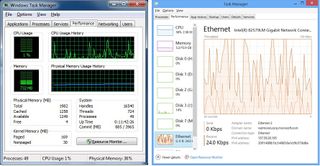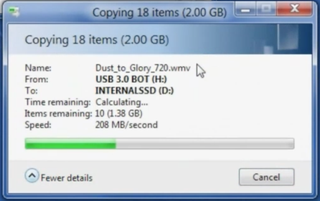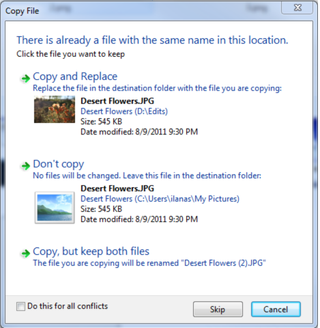Windows 8.1 vs. Windows 7 – Which is best for you?
As Windows 10 draws nearer and Microsoft distances itself from older OS, we look at the best option for your PC
6. Task Manager
The Task Manager for Windows 8 displays more information in a visual form, with coloured charts for heat, CPU, memory, disk, Ethernet and wireless consumption. There's even a breakdown of how each program effects boot time.

Winner: Windows 8 Who doesn't want more informative graphs and charts?
7. USB 3.0 support
Windows 8.1 sports OS-level support for USB 3 devices. Instead of relying on manufacturers or updates to add support for devices, any Windows 8-enabled device can now enjoy faster speeds of up to 5 Gbit/s.

Winner: Windows 8 Getting faster transfer speeds is always a positive thing.
8. Data transfers done right
Copying and moving data on Windows 7 was handled in the wrong way. When encountering a name collision between two files, for example, the transfer was interrupted with a prompt asking how to proceed, stacking individual windows for each transfer.

This has thankfully been cleaned up with Windows 8, putting all transfers into one window and pushing name collision dialogues to the end of the process. Windows even tried to make the time estimations on transfer more accurate.
Winner: Windows 8 Not only does it transfer data faster, but Windows 8 ensures less interruptions and more accurate time estimations.
9. Daemon Tools is obsolete
Windows 8 finally added support for native mounting of ISO, IMG and VHD disk images. We can now access the content of virtual disk files and write them to physical CDs without any third-party programs like the now-obsolete Daemon Tools.
Winner: Windows 8 - Finally helps to put the nail in the coffin ofphysical media.
10. 3D printing support
Microsoft added native support for 3D printing in Windows 8.1, allowing you send files to a MakerBot Printer straight from the Charms bar.

Winner: Windows 8 - It's not a necessity yet but, in the future, the ability to print 3D prototypes could be invaluable to businesses.
Get the ITPro. daily newsletter
Receive our latest news, industry updates, featured resources and more. Sign up today to receive our FREE report on AI cyber crime & security - newly updated for 2024.




